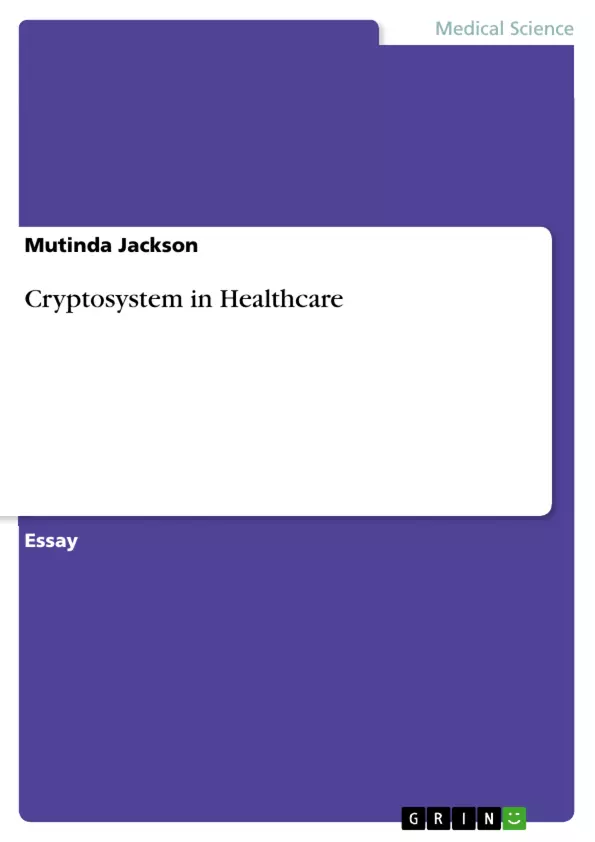In this advanced age, medical practitioners must have the capacity to speak with associates and patients as safely as though they were addressing them up close and personal without dread of their correspondences being blocked. Security tests have over and again demonstrated that end-to-end security is the best way to forestall cybercriminals, stalkers, corporate spying, hackers, maverick country states and more from disregarding mobile correspondences. On account of that, medicinal services associations must furnish their workers with scrambled portable correspondence services. We are not discussing user informing platforms that have as of late started labelling encryption onto their administrations as an after-thought, however communication that have been worked in light of security from the get-go.
There's almost certainly that data innovation headways have been profoundly gainful to the healthcare industry. Specialists are presently ready to send data to associates and suppliers at a considerably quicker rate than in the times of paper outlines, bringing about more effective patient care. Without a doubt, cell phones and tablets are enhancing almost every part of the human services system. However, this headway results in a threat. For instance, before automated health records, physical access was required to recover indispensable records. Presently, a programmer can conceivably break into a system remotely and take patient’s data.
Protection and restriction of delicate individual data are the foundation of the specialist patient association; in any case, the selection of an electronic record framework leaves personal data that is being transmitted, put away, or recorded susceptible to the assault of programmers who can enter these online frameworks. The best way to thwart these pernicious assaults, which can bring about data fraud and the loss of billions, is by encrypting this private data. Encryption utilizes sophisticated calculation that changes the data into indiscernible cryptogram code that must be deciphered when the approved party enters the right key.
Inhaltsverzeichnis (Table of Contents)
- Introduction
- Background
- Limitations
- Conclusion
- Reference
Zielsetzung und Themenschwerpunkte (Objectives and Key Themes)
This research aims to examine the critical role of cryptosystems in safeguarding sensitive patient data within the healthcare industry. The paper delves into the vulnerabilities posed by the increasing digitization of medical records and the need for robust security measures to prevent data breaches and protect patient privacy.
- The importance of data security in the healthcare industry.
- The increasing threat of cyberattacks and data breaches in healthcare.
- The effectiveness of cryptosystems in protecting patient data.
- The challenges and limitations of implementing cryptosystems in healthcare.
- The use of cryptography and steganography in enhancing data security in healthcare.
Zusammenfassung der Kapitel (Chapter Summaries)
- Introduction: This chapter establishes the context for the research, highlighting the significance of secure communication in the healthcare industry. It emphasizes the need for robust encryption to protect sensitive patient data and emphasizes the vulnerabilities created by the increasing reliance on digital technologies in healthcare.
- Background: This chapter delves into the context of data storage, sharing, and administration in healthcare facilities. It discusses the challenges posed by the increasing volume of data shared within the healthcare industry and the concerns surrounding the impact of data encryption on efficiency and ease of use.
- Limitations: This chapter examines the potential challenges associated with the implementation of cryptosystems in healthcare, including the complexity of managing encryption keys, the cost of implementing encryption, and the potential impact on existing systems and applications.
Schlüsselwörter (Keywords)
The primary keywords and focus topics of this research include data security, cryptosystems, encryption, healthcare industry, cyberattacks, data breaches, patient privacy, cryptography, steganography, 3DES, LSB, and electronic health records. These terms encapsulate the core concepts and themes explored in the paper, particularly focusing on the application of cryptographic methods to safeguard patient data in the digital age.
- Quote paper
- Mutinda Jackson (Author), 2017, Cryptosystem in Healthcare, Munich, GRIN Verlag, https://www.hausarbeiten.de/document/430929


